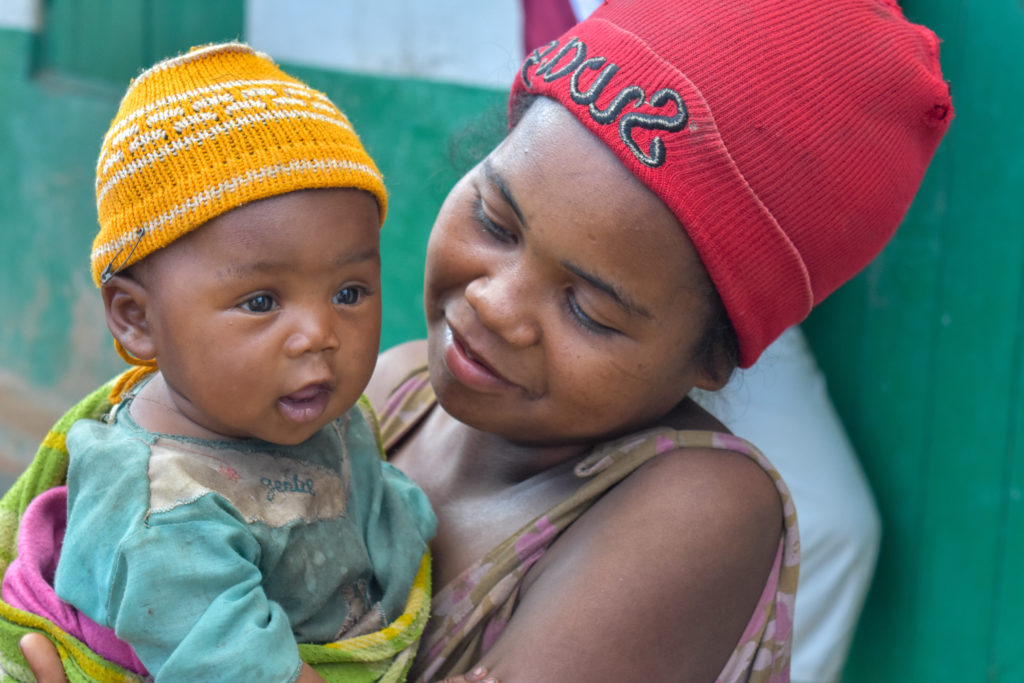How Madagascar’s Biodiversity Influenced My Career in Public Health
December 18th, 2018 | story
When I was a young medical student, I traveled throughout Madagascar with my father, a medical doctor, and pioneer working to strengthen community health and family planning through the public health system. As we traveled together I encountered Madagascar’s exceptional biodiversity for the first time, from the second largest cave in the world to seven of the world’s nine majestic baobab tree species. As a result of these trips, my interest in health and fascination with my country’s natural resources grew.
When I think back to my first experiences twenty years ago, I remember being amazed by the smiling and welcoming people I met in very remote areas. Yet hidden behind these smiles, I often saw suffering. Largely, people experienced suffering because of economic challenges and their lack of access to family planning. These factors led to increasingly large families, malnourished children, and vulnerability to diseases (such as malaria, diarrhea or pneumonia). Additionally, while communities were surrounded by environmental richness that could be a source of both income and nutrition, these areas were often officially protected by the government and the surrounding communities were no longer allowed to utilize them.
In the early years of my career, I encountered a few environmental projects that introduced family planning as part of their interventions in order to slow human pressure on protected areas. I also discovered new yield production techniques to improve livelihoods and land management, as well as increase income. As community members began to see positive results from these projects and interventions, they started to supporting community-based natural resource management programs more consistently. I have found that stand-alone conservation programs do often achieve notable results in preserving Madagascar’s natural resources. However, they rarely address population and health issues effectively.
My career has immersed me in the population, health and environment world, where I have worked through several of JSI’s projects, including the current Population Health and Environment Activity, funded by Advancing Partners and Communities, and Mahefa Miaraka, a community health initiative funded by USAID.
For over 20 years, USAID has supported the Government of Madagascar in addressing population and health issues through community-based services in thousands of remote villages, many of which are located around environmental protection areas. As a result of these efforts, mothers and women of reproductive age speak about the benefits they have gained from community volunteers and local management committees working together to promote integrated basic health services, including case management of childhood illnesses, family planning, nutrition, and preventable disease surveillance. Because of the presence of these community health volunteers nearby, villagers no longer travel long distances to reach a health facility.

Because of the partnership between USAID and the Government of Madagascar, I have personally seen the unmet need for family planning decrease in rural areas because of projects like MAHEFA . While working on these projects, I have heard women say they feel less stress since they don’t worry about an unexpected pregnancy and they have the opportunity to be productive members of the workforce to support their families. I have also witnessed an increase in men and women working together to decide on the number of children they want and the best options to support their families and increase their income. It is now more common for families like these to support the well-being of their communities by adopting environmentally-sound agricultural or fishing techniques and by being active members of their health committees.
I am proud to have played a role in the expansion of PHE work in Madagascar through community actors, such as community health volunteers and model farmers. While this work is far from over, there have been notable gains in the number of organizations and leaders targeting population and environmental issues at once, turning challenges in both areas into opportunities. The story of this transformation continues, day by day, near and around the baobabs and along the beautiful shores of the island of Madagascar.
By: Yvette Ribaira
We strive to build lasting relationships to produce better health outcomes for all.